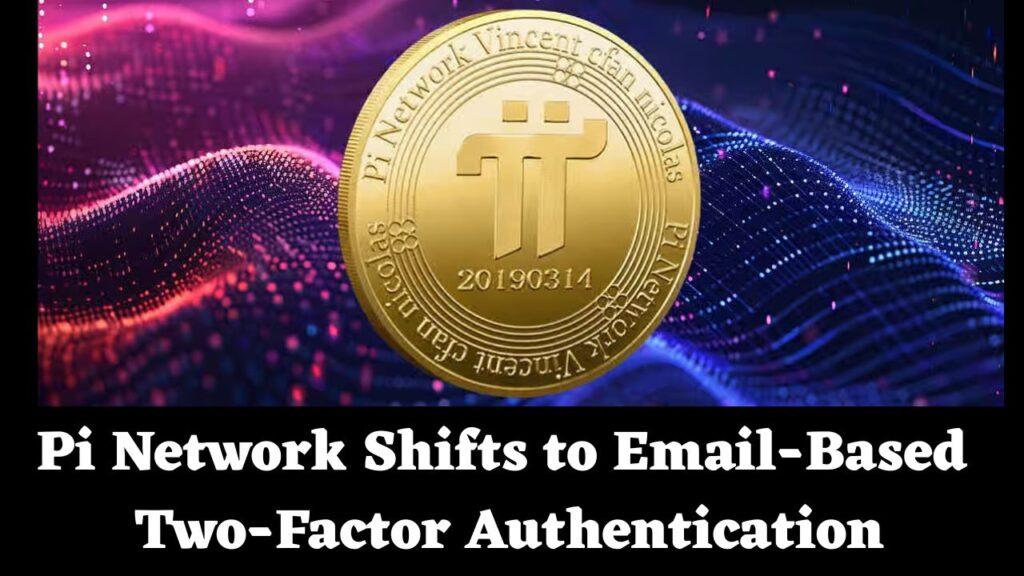Pi Network Shifts to Email-Based Two-Factor Authentication: Pi Network, the globally growing cryptocurrency and digital ecosystem, has officially started transitioning from SMS-based authentication to email-based two-factor authentication (2FA), marking a pivotal step toward improved account security, scalability, and system integrity.
Why Pi Network Is Moving Away from Phone Number-Based Authentication
Historically, Pi Network accounts were uniquely identified using phone numbers. While this approach offered initial convenience and accessibility, it soon became clear that relying solely on SMS verification posed serious limitations. The unreliability and cost of SMS-based communication—especially across borders—became a significant obstacle for Pi’s globally distributed community.
Due to differences in telecommunication regulations, mobile carrier policies, geographic restrictions, and varying subscription plans, many users faced issues in receiving verification codes. This created not only inconvenience but also increased security risks and operational costs for the platform.
Embracing Email-Based 2FA for Improved Security and Scalability
To address these challenges and prepare for future scalability, Pi Network is now adopting email-based two-factor authentication. This shift aligns with the platform’s long-term vision of integrating advanced security measures like passkeys and biometric authentication.
Email-based 2FA offers several key advantages:
- Improved reliability compared to SMS
- Enhanced security through a dual-verification system
- Scalability across regions without the limitations of mobile carriers
- Better user experience with consistent access regardless of geographic location
The Importance of Trusted Emails in the Pi Network
A crucial step in this migration is ensuring that every user has a verified and trusted email address linked to their Pi account. However, not all users added an email during initial account creation. Others may have:
- Entered an incorrect or outdated email
- Lost access to their registered email accounts
- Shared email addresses with multiple Pi accounts, especially within families
This lack of standardized email data prompted Pi Network to implement additional system-level checks to ensure that the new authentication process is robust, secure, and fair for all users.
System Checks, Paused Migrations, and the Path Forward
Before resuming account migrations, Pi Network undertook an extensive analytics-based review of how users:
- Added and verified their email addresses
- Completed email-based 2FA
- Passed additional identity verification like KYC (Know Your Customer)
- Participated in liveness checks to prove account authenticity
These reviews were essential to detect and resolve discrepancies, prevent fraud, and reinforce the security framework of the entire network. In some cases, users may be asked to perform additional steps, such as an extra SMS verification or a liveness test, to complete the transition.
Due to these thorough checks, Pi temporarily paused account migrations. The good news is that migrations have now resumed and will continue to expand gradually as more users complete their email verifications and system checks.
What This Means for Pi Network Users
For Pioneers (users of the Pi Network), this marks an important upgrade in the way accounts are secured. While the shift may require action—such as adding or updating your email, completing 2FA, or undergoing a liveness check—it ultimately enhances your account protection, especially as Pi moves closer to Mainnet readiness and broader adoption.
Pi Network urges all users to:
- Ensure they have a unique, accessible, and verified email linked to their Pi account
- Be responsive to any additional verification steps requested in the app
- Stay updated through official Pi Network announcements
A Step Closer to a Secure and Decentralized Future
This move to email-based 2FA is more than just a security update—it’s a step toward future-proofing the Pi Network for global scalability, decentralization, and user empowerment. With stronger authentication in place, the network can support new features, integrations, and services with greater confidence.
Conclusion: Pi Network Shifts to Email-Based Two-Factor Authentication
The transition to email-based two-factor authentication marks a new chapter in the Pi Network’s journey. While the process may require a bit of patience and effort from users, the long-term benefits—stronger security, better access control, and improved global functionality—are well worth it.
As migrations continue, Pi Network remains committed to a smooth, secure, and user-friendly experience for all Pioneers. Stay tuned for updates and make sure your email is ready for this next evolution in the Pi ecosystem.

